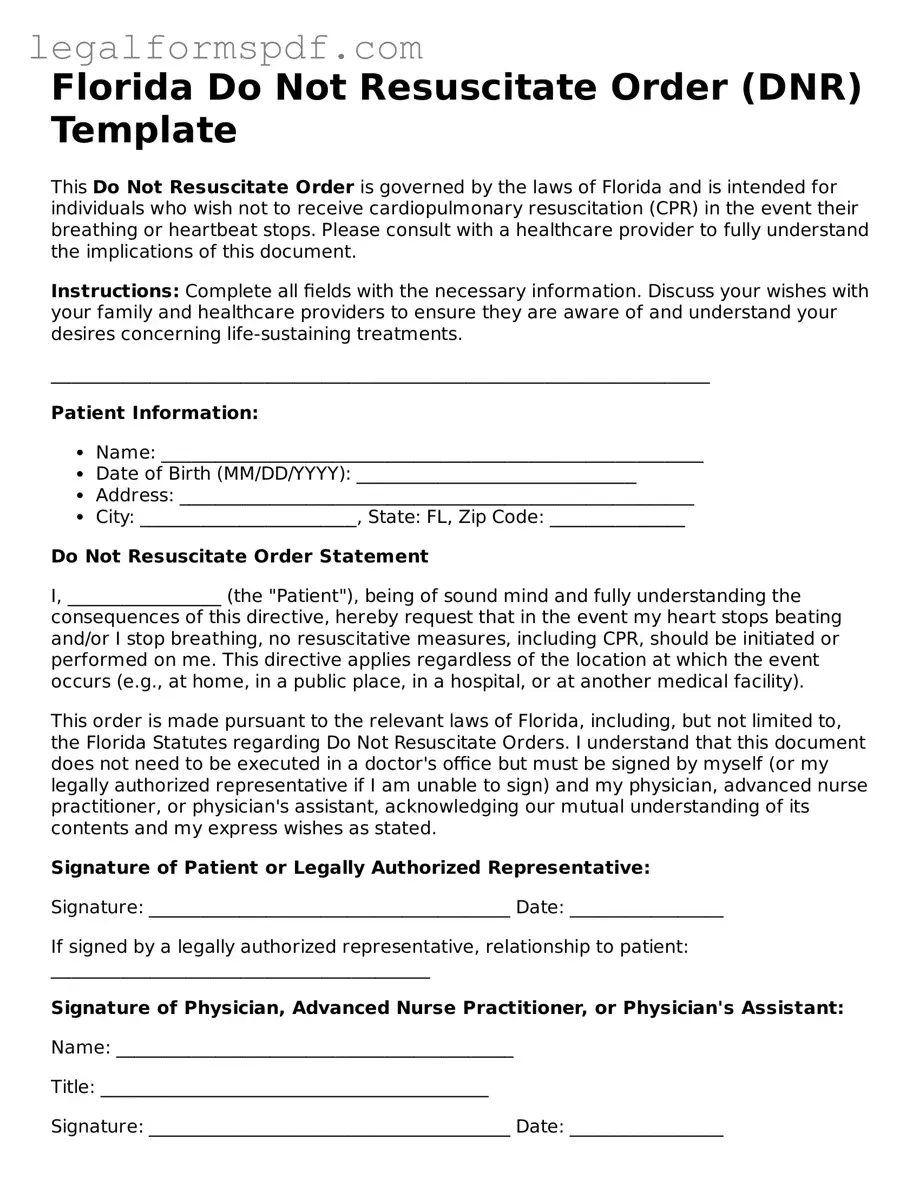Florida Do Not Resuscitate Order (DNR) Template
This Do Not Resuscitate Order is governed by the laws of Florida and is intended for individuals who wish not to receive cardiopulmonary resuscitation (CPR) in the event their breathing or heartbeat stops. Please consult with a healthcare provider to fully understand the implications of this document.
Instructions: Complete all fields with the necessary information. Discuss your wishes with your family and healthcare providers to ensure they are aware of and understand your desires concerning life-sustaining treatments.
_________________________________________________________________________
Patient Information:
- Name: ____________________________________________________________
- Date of Birth (MM/DD/YYYY): _______________________________
- Address: _________________________________________________________
- City: ________________________, State: FL, Zip Code: _______________
Do Not Resuscitate Order Statement
I, _________________ (the "Patient"), being of sound mind and fully understanding the consequences of this directive, hereby request that in the event my heart stops beating and/or I stop breathing, no resuscitative measures, including CPR, should be initiated or performed on me. This directive applies regardless of the location at which the event occurs (e.g., at home, in a public place, in a hospital, or at another medical facility).
This order is made pursuant to the relevant laws of Florida, including, but not limited to, the Florida Statutes regarding Do Not Resuscitate Orders. I understand that this document does not need to be executed in a doctor's office but must be signed by myself (or my legally authorized representative if I am unable to sign) and my physician, advanced nurse practitioner, or physician's assistant, acknowledging our mutual understanding of its contents and my express wishes as stated.
Signature of Patient or Legally Authorized Representative:
Signature: ________________________________________ Date: _________________
If signed by a legally authorized representative, relationship to patient: __________________________________________
Signature of Physician, Advanced Nurse Practitioner, or Physician's Assistant:
Name: ____________________________________________
Title: ___________________________________________
Signature: ________________________________________ Date: _________________
License Number: __________________________________
_________________________________________________________________________
This document should be kept in a location where it can be easily accessed by emergency personnel or healthcare providers. Consider informing close family, friends, and caregivers of the document's existence and location.
Note: This template is provided for informational purposes only and does not constitute legal advice. For personalized advice and to ensure this document meets all legal requirements and accurately reflects your wishes, consider consulting with a legal professional or healthcare provider specialized in end-of-life care decisions.
